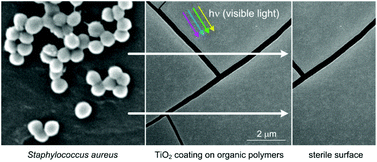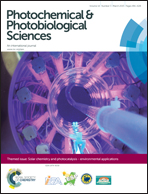Visible light induced photocatalytic inactivation of bacteria by modified titanium dioxide films on organic polymers
Abstract
Commercially available polypropylene foil was pretreated with a low temperature oxygen plasma and covered with a thin film of nanocrystalline titanium dioxide by dip coating. The films were then photosensitized by titanium(IV) surface charge transfer complexes formed by impregnation with catechol. The photoactivity of the coatings up to 460 nm was confirmed by photoelectrochemical measurements. The photoinactivation of Escherichia coli and Staphylococcus aureus was evaluated by a glass adhesion test based on ISO 27447:2009(E) in the presence of visible light. The coating showed good antimicrobial activity induced by light from a light-emitting diode (405 nm), in particular towards E. coli ATCC 25922 strain. Adaptation of ISO 27447:2009(E) to assess bacterial photoinactivation by photocatalytic coatings will allow this procedure to be applied for the comparison of photoactivity under a range of irradiation conditions.

- This article is part of the themed collection: Solar Chemistry and Photocatalysis - environmental applications

 Please wait while we load your content...
Please wait while we load your content...